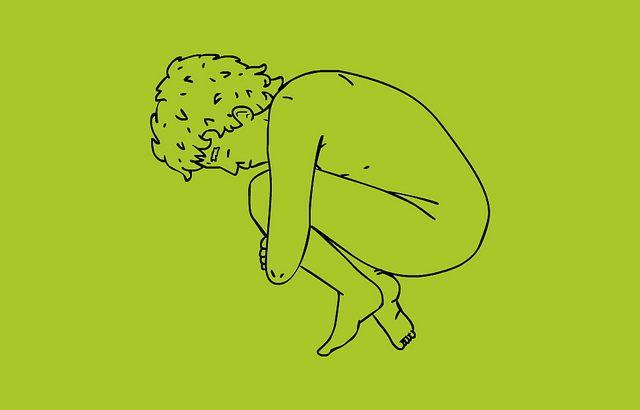The first time I encountered the phrase passive-aggressive was during a break-up.
Feeling hurt, I was defensive and had no idea what the words meant, and all I knew is that it was an attack and a label. Fast forward a decade filled with a great deal of introspection and inquiry into psychology, self-discovery and personality, and I would have had to agree with her. I used to be passive-aggressive, still can be, and have learned what it is, how to identify it, and the cure.
Passive-aggressive is not having the courage to speak openly and directly.
As a highly sensitive person, I am aware of the impact of my words, actions and presence on others. Most especially the people closest to me. The last thing I want to do is hurt them, bring them discomfort or mess anything up. More so, I never wanted to be seen as anything other than human, divine, and loving. I do my best, and I believe the majority of humans also try their best.
I didn’t always have passive-aggressive traits. They grew within me because of life-events; being betrayed, being ridiculed, being treated as less than human and hurt at the deepest levels. On an instinctual level I learned that I had to hide myself. To be open-hearted, expressive and intimate would only allow myself to be hurt, demeaned and abandoned.
It took years for me to recognize my fears, the causes for them, and how to live with and move past them.
Most passive-aggressive people tend to have deep wounds, either from childhood or traumatic experiences in life.
The tendency to be fearful is a natural result of trauma. Nobody wants to be hurt the first time, let alone again.
And when facing environments, scenarios, emotions or people that trigger past events, an instinctive defensive response arises. The instinctive response happens without thought, and precedes emotion. It is often invisible, cannot be recognized, and rests hidden deep within the subconscious. The emotions that arise are often not acknowledged, and don’t want to be lived. Fear takes precedence and the self becomes hidden from not only the other person, but more importantly to one’s own self. Often times the fear isn’t even recognized as fear.
This happens quickly, and is not a thought out, deliberate or intentional response.
Passive-aggressive tendencies arise from fear.
The fear arises for a few reasons. It arises from not wanting to hurt the other person, or saying something that would bring negative results in one’s own life.
Most commonly the fear arises because of not wanting to trigger a response in the other person that would cause them to hurt us.
It is an instinctual, animal level fear that slips beneath conscious awareness.
This is what makes passive-aggressiveness maladaptive. Maladaptive is a behavior that has the opposite result of what is intended. Rather than keeping the peace, passive-aggressive tendencies drive the other person away because there is no foundation for truth. And without a solid base for communication, in the absence of security and trust, there is no chance for relationship.
Fear manifests the unwanted desire through sheer emotional power.
Then the harm that one is trying to avoid becomes real. And the responses one was hoping to avoid in the other arise.
Every person is passive-aggressive to some degree.
I’ve yet to meet a person who does not have this defensive trait. To understand and work with passive-aggressiveness in another person requires a depth of personal truth and security within. It means facing fears, and learning to express and live one’s own authentic self. When knowing how to heal oneself, the sensitivity for recognizing and healing others through non-doing and simple presence becomes available.
The first step to healing passive-aggressiveness is awareness within.
The cure is to be oneself, and to speak internal truth with integrity, regardless.
A person who is passive-aggressive is simply being defensive. To expect somebody to be other than as they are is harmful, and only creates more resistance.
It is frightening to present oneself. In doing so, one becomes vulnerable to unwanted reactions, criticisms, judgments and all manners of imagined and real harms.
Speaking personal truth and owning one’s words, spirits and their consequences requires a great deal of courage. Finding the strength to speak openly gives emotional liberty that can be grounding, and very warming.
The cure to heal the other is to first heal oneself and to live the example.
Expressing with sensitivity the personal, individual spirit shows a person who lives in fear how to express and be open without fear. But to take action to try and change the other person is to see them as broken, and needing ‘fixed.’ Nobody wants to feel or be treated as broken. Instead, see the person through eyes of love and see the parts of them that are already whole and courageous.
Verbally appreciate with sincere gratitude the authentic spirit when it presents itself.
To communicate with a passive-aggressive individual can be frustrating.
It is easy to feel off-balanced with somebody who isn’t speaking authentically. The ability to sense that a person is incomplete with their words and not fully sharing their emotions, or speaking the entire truth, is a natural talent. Especially when knowing somebody intimately.
It can be easy to feel that the other is not being forthcoming. This does not mean that the other is being a liar, their defensiveness reveals a personal boundary that must be respected. In respecting the boundary, and being secure with oneself, the chance for healing presents itself.
To judge the person, to throw labels at them and to abandon them only reveals one’s own judgmental nature, critical mind and unloving traits.
In other words, when you recognize that a person is being passive-aggressive or defensive, to point that out or to label them as passive-aggressive will do no good, it will only cause them to retreat further and become more defensive.
Being around a person who is passive-aggressive will raise every trait of insecurity in the people around them. Self-knowledge and adherence to personal truth is that much more essential around a passive-aggressive individual, because the passive-aggressive person will undermine one’s very perspective and relationship to reality. This is why it is essential to first own and work through one’s own passive-aggressive tendencies. Without a solid personal base, the insecure person who is around passive-aggressiveness will disintegrate emotionally.
Living with passive-aggressiveness takes patience.
The passive-aggressive individual is not a bad person, they are simply a person who has been deeply hurt.
And when such a person is a family member, friend, or intimate partner, the only way to stay present is with expansive love. Pushing such a person to be honest or direct does not work because they cannot see past their own fear and hurt. Space and time are essential for healing. Even more so, trusting that person and seeing the best in them can alleviate the fear and reassure them that they are trusted, held with love, and embraced with security.
Personal responsibility and living one’s own truth sets an example for others to live and embrace their own nature.
Living and treating oneself with love, sensitivity and awareness gives strength, spaciousness and resources for allowing others to be as they are.
Love remains the cure. First from within, then to without.
Relephant:
Passive-Aggressive (Buddhist) Note.
How we should act:
Seven Reasons to Unfriend someone on Facebook.
Love elephant and want to go steady?
Sign up for our (curated) daily and weekly newsletters!
Editor: Catherine Monkman
Photo: lookcatalog/Flickr
 Share on bsky
Share on bsky


Read 50 comments and reply